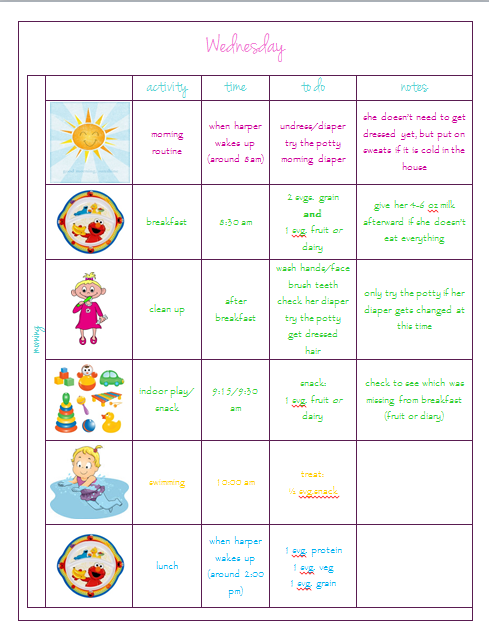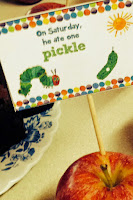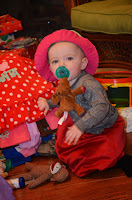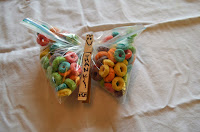Last summer my husband and I traveled with our then
six-month-old daughter on a cross-country road trip that took us through twelve
states. Our Toyota sedan was stuffed to the gills, filled with all the
accoutrements that come along with traveling with a small child. It was a new
experience for the two of us, as we've always prided ourselves on being light
packers. Before we bought our house we were somewhat minimalists, moving
frequently and typically giving away most of our furniture and starting over
each time. Since the birth of our daughter, though, our possessions have
effectively doubled. Like many of the homes in the Old Town neighborhood, our
house has minimal storage, lacking closets, a garage, and a basement. About all
we have is a narrow attic space above the small portion of our home that isn't
an addition. Now every corner of the space is overflowing with baby items, a
swing here, a stack of board books there, a pile of folded blankets tucked away
beside the couch. As my husband and I packed for our trip, deciding what was
necessary to take and what it was possible to leave, I couldn't believe how
much stuff we would need to make it through the four weeks that we would be
gone. It was the first time I'd ever been forced to take inventory of all the things
that we use on a daily basis simply keeping our daughter alive. It got me
thinking about how much stuff there is involved in being a parent these days,
and how much of it we really do—or do not—need.
Here's what we brought: one Pack-n-Play portable crib; four
sets of clothing for my daughter: one for the size she was wearing at the time,
one in case she grew, one for hot weather, one for cold; a suitcase full of
clothes and other essentials for my husband and I, including one blow dryer
that according to my husband took up too much space because "ounces lead
to pounds"; one teal Bumbo seat; one Ergo carrier, one Baby Bjorn, and one
Maya wrap; rock climbing harnesses and shoes; all our running stuff; three
swimsuits per person; our laptop and a few work items I was pretending to plan
to make time for during the trip; one forty-pound dog and his large Tupperware
box of food; a pillow; four blankets; bottles and bottle accessories (drying
rack, microsteam sanitizer bags, natural dish soap, bottle brush, formula); one
collapsible stroller; one bag of random things including a bottle warmer and
nightlight and baby monitor; one bag of books; one small-ish box of toys; baby
toiletries and medicines; a cooler; two packs each of diapers and wipes; a
diaper bag with extra outfits, bottles, and formula; two folding chairs; one
air mattress; six pairs of adult shoes; four pairs of baby shoes; fourteen
headbands; two rain jackets; one
umbrella; two Father's Day gifts.
My husband is truly a master of packing the car. We had
everything and anything we needed, or so we thought.
But along the way, each time we played the game of Tetris
involved in retrieving some essential item from the trunk, I couldn't help but
feel as if we had brought too much. In our defense, every single thing we had
was either something we truly intended to use or else something that we would
need in case of some emergency. The last stop on our trip was a stay with my
husband's sister in the Wicker Park neighborhood of Chicago. She's a design
student who wants to build tiny houses for disabled adults to live in
independently. She and her boyfriend and dog currently reside in a 247
square-foot apartment which the contents of our vehicle alone would have
filled. When we arrived there after two days on the road, we bustled in with a
tiny mountain of necessities which quickly piled up in the small living space.
It was at that moment that the full weight of everything we had accumulated in
the last six months really hit me. How could someone so small involve such a
huge entourage of things, a quantity of possessions that could easily trump
that of four adults?
The hard fact was that it was all pretty excessive. Sure,
everything there in some way made life with an infant more easy and convenient,
but very little of it was essential. There were a few items we did need. The
Pack-n-Play was worth its weight; we only used it a couple of times, but it
really allowed my husband and I our much-needed sleep. About five hundred
thousand wet wipes definitely saved the day on multiple occasions (two packs
was not nearly enough). All the bottles and their accessories of course. And
I'll admit that my daughter went through quite a few outfits.
But what we didn't need were things like any of the clothes
we brought for ourselves. All of the athletic equipment, not sure what we were
thinking there. The second and third baby carriers and wraps. Of course, the
stuff I brought for work. The books and toys; the grandparents supplied these
as soon as we arrived in town. The truth is we didn't actually need most of
what we brought. We had access to laundry facilities, stayed in the homes of
family members and used their toiletries with entitlement.
We didn't have everything we needed; we had everything.
Why does it feel necessary as parents to surround ourselves
with physical reminders of our responsibility to keep this tiny, helpless
little person alive? Maybe because it's such an important job, because failing
at it is so terrible a thought that we want to try everything we can to do it
better. But I don't think doing it better always means making it easier and
having things doesn't always make me feel confident. Maybe if we had a little
bit less, we might actually be more.
An earlier version of this essay originally appeared in the August 2014 issue of The 4th Street Chronicle

































































